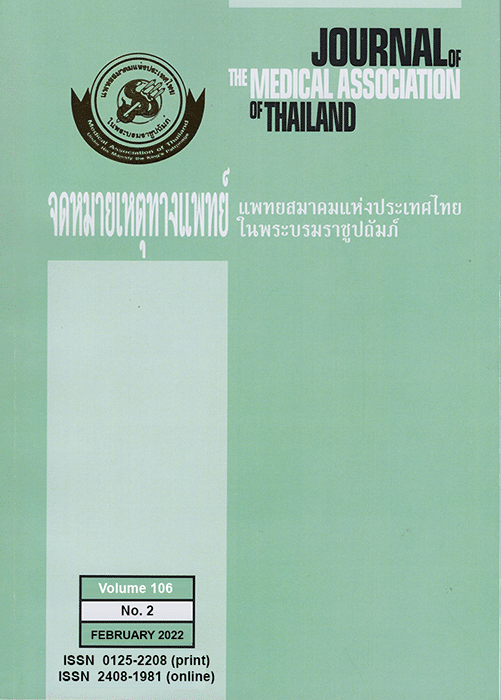
Diagnostic performance of reagent strip testing for antenatal screening of asymptomatic bacteriuria using single- and double-urine culture criteria (2017)
Title : Diagnostic performance of reagent strip testing for antenatal screening of asymptomatic bacteriuria using single- and double-urine culture criteria
Researcher : Kovavisarach, E., Romyen, S., Kanjanahareutai, S.
Abstract : Objective: To determine the prevalence of asymptomatic bacteriuria (ABU) in pregnant women and diagnostic performance of reagent strip test for screening of ABU using single and double urine culture criteria.
Material and Method: Pregnant women attending their first antenatal care at Rajavithi Hospital Bangkok, between August 22 and November 4, 2011 were enrolled to collect clean-catch midstream urine for reagent strip test and culture on blood and MacConkey agar plates. The second urine culture was collected only from participants who had the first positive urine culture.
Results: Sixty-one of the 754 cases (8.1%) got the positive first urine culture. Twenty of the sixty-one cases were still positive urine culture in the second culture. Therefore, prevalence of ABU was 8.1% and 2.7% using single and double urine culture as gold standard. Escherichia was the most common pathogen in both single and double urine culture (27.9% and 40%, respectively). The urine dipstick nitrite, leukocyte, and both test by using double urine culture had a sensitivity of 35.0%, 50.0%, and 20.0%, specificity of 86.5%, 52.2%, and 93.2%, positive predictive value (PPV) of 6.6%, 2.8%, and 7.4%, and negative predictive value of 98.0%, 97.5%, and 97.7%, respectively. All diagnostic performances of double-urine culture were comparable with single-urine culture except marked worse PPV.
Conclusion: Prevalence of ABU in pregnant women was decreased from 8.1 to 2.7% using single and double culture as gold standard. Reagent strip testing is not sensitive for screening of ABU; either single or double urine culture were used as gold standard.
Keywords: Asymptomatic bacteriuria, Pregnancy, Reagent strip, Single urine culture, Double urine culture
Link to Academic article: http://www.jmatonline.com/index.php/jmat/article/view/7049
Journal : Journal of the Medical Association of Thailand, 2017, 100(10)
Bibliography : Kovavisarach, E., Romyen, S., & Kanjanahareutai, S. (2017). Diagnostic performance of reagent strip testing for antenatal screening of asymptomatic bacteriuria using single- and double-urine culture criteria. Journal of the Medical Association of Thailand, 100(10), 1045–1049.
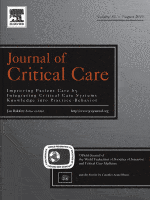
Doripenem dosing regimens in Asian critically ill patients with continuous renal replacement therapy (2019)
Title : Doripenem dosing regimens in Asian critically ill patients with continuous renal replacement therapy (2019)
Researcher : Chaijamorn, W., Puchsaka, P.W., Pattharachayakul, S., …Boonpeng, A., Pummangura, C.
Abstract : Antibiotic dosing in critically ill patients with continuous renal replacement therapy (CRRT) is still challenging. Pharmacokinetic changes in critically ill patients such as increased volume of distribution and decreased protein binding affinity affect hydrophilic drug dosing regimens [1]. Consequently, we might prescribe inadequate doses of antimicrobial agents in patients with CRRT [1] which can affect the morbidity and mortality associated with sepsis [2]. Requirement of loading dose and higher maintenance doses for this group of patients has been suggested to achieve pharmacokinetic and pharmacodynamic targets [3].
Continuous renal replacement therapy has been utilizing to effectively remove fluid and waste products in this group of patients due to hemodynamic instability [4]. Doripenem is a water-soluble carbapenem antibiotic and commonly used for Gram negative infection in intensive care unit (ICU) [5]. It can be removed by CRRT due to small molecular weight (438.52 Da) and low volume of distribution (16.8 L) [6].
The recommended dosing regimens from clinical resources are mostly from the pharmacokinetic studies in Western patients and there were a few studies conducted in Asian population [[7], [8], [9], [10], [11], [12]]. No suggested doripenem dosing regimens for CRRT patients based on Asian pharmacokinetic parameters exists. This study aimed to define the optimal doripenem dosing regimens using pharmacokinetic parameters from Asian population and body weights of Asian critically ill patients and to evaluate the probability of target attainment (PTA) of recommended dosing regimens from available clinical resources.
Link to article: https://doi.org/10.1016/j.jcrc.2019.04.030
Journal : Journal of Critical Care, 2019, 52.
Bibliography : Chaijamorn, W., Puchsaka, P., Pattharachayakul, S., Charoensareerat, T., Srisawat, N., Boonpeng, A., & Pummangura, C. (2019). Doripenem dosing regimens in Asian critically ill patients with continuous renal replacement therapy. Journal of Critical Care, 52, 233–236.

Ecteinascidin 770, A tetrahydroisoquinoline alkaloid, targeting the bacterial cell division protein FtsZ (2018)
Title : Ecteinascidin 770, A tetrahydroisoquinoline alkaloid, targeting the bacterial cell division protein FtsZ
Researcher : Phennapa Charoenwiwattanakij, Jaturong Pratuangdejkul, Montree Jaturanpinyo, Witaya Lowtangkitcharoen, Khanit Suwanborirux and Veena Nukoolkarn
Link to article : Chiang Mai Journal of Science, 2018, 45(7), pp. 2566–2580. https://epg.science.cmu.ac.th/ejournal/journal-detail.php?id=9652
Journal : Chiang Mai Journal of Science / in Scopus
Citation : Charoenwiwattanakij, P., Pratuangdejkul, J., Jaturanpinyo, M., Lowtangkitcharoen, W.,Suwanborirux, K., & Nukoolkarn, V., (2018). Ecteinascidin 770, A tetrahydroisoquinoline alkaloid, targeting the bacterial cell division protein FtsZ. Chiang Mai Journal of Science, 45(7), 2566–2580.
ฐานข้อมูลงานวิจัย มหาวิทยาลัยสยาม : –

Effect of actinomycin D isolated from the cultured broth of marine streptomyces spp. On cell division protein FtsZ (2020)
Title : Effect of actinomycin D isolated from the cultured broth of marine streptomyces spp. On cell division protein FtsZ
Researcher : Phennapa Charoenwiwattanakij, Jaturong Pratuangdejkul, Sumet chongruchiroj, Khanit Suwanborirux, Chitti Thawai, Jiraporn Chingunpitak and Veena Satitpatipan
Link to article : Chiang Mai Journal of Science, 2020, 47(3), pp. 362–377. https://epg.science.cmu.ac.th/ejournal/journal-detail.php?id=10910
Journal : Chiang Mai Journal of Science / in Scopus
Citation : Charoenwiwattanakij, P., Pratuangdejkul, J., Chongruchiroj, S., Suwanborirux, K., Thawai, C., Chingunpitak, J., & Satitpatipan, V., (2020). Effect of actinomycin D isolated from the cultured broth of marine streptomyces spp. On cell division protein FtsZ. Chiang Mai Journal of Science, 47(3), 362–377.
ฐานข้อมูลงานวิจัย มหาวิทยาลัยสยาม : –
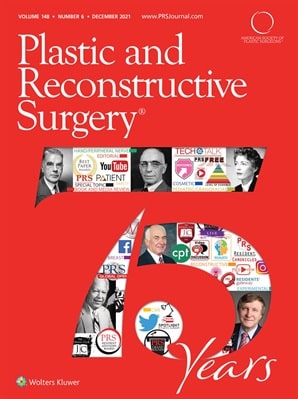
Effect of needle sizes 30 G and 32 G on skin penetration force in cadavers: Implications for pain perception and needle change during botulinum toxin injections (2021)
Title : Effect of needle sizes 30 G and 32 G on skin penetration force in cadavers: Implications for pain perception and needle change during botulinum toxin injections
Researcher : Tansatit, T., Uruwan, S., Wilkes, M., Rungsawang, C.
Abstract : Cosmetic botulinum toxin injections usually cause discomfort to the patient. Using a small needle causes less pain compared to using a large needle,1 but a drawback is the price. A 30-G needle costs 2 THB while a 32-G needle costs 15 THB. The physician must decide when a needle is to be discarded. In one study, a 30-G needle was changed after approximately four to six punctures because of increased skin resistance.2 A 32-G needle is less painful than a 30-G needle because of the 25 percent smaller diameter of the 32-G needle.3 Instead of relying on individual tactile sense, we compared the penetration forces of two needle sizes to decide when to change the needle during botulinum toxin treatment.
Link to Academic article: DOI: 10.1097/PRS.0000000000008558
Journal : Plastic and Reconstructive Surgery, 2021, 148(6), pp. 1071E–1073E
Bibliography : Tansatit, T., Uruwan, S., Wilkes, M., & Rungsawang, C. (2021). Effect of needle sizes 30 G and 32 G on skin penetration force in cadavers: Implications for pain perception and needle change during botulinum toxin injections. Plastic and Reconstructive Surgery, 148(6), 1071E–1073E. DOI: 10.1097/PRS.0000000000008558
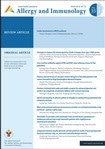
Effect of vitamin D on lung function assessed by forced oscillation technique in asthmatic children with vitamin D deficiency: A randomized double-blind placebo-controlled trial (2019)
Title : Effect of vitamin D on lung function assessed by forced oscillation technique in asthmatic children with vitamin D deficiency: A randomized double-blind placebo-controlled trial
Researcher : Clin.Prof.Suwat Benjaponpitak
Department : Faculty of Medicine, Siam University, Bangkok, Thailand
E-mail : med@siam.edu
Abstract : Background: The role of vitamin D and asthma in pulmonary function changes showed conflicting result.
Objective: To evaluate if vitamin D treatment would improve lung function assessed by forced oscillation technique (FOT) in vitamin D deficient asthmatic children.
Methods: A randomized double-blind placebo-controlled trial was performed in children, aged 3-18 years with well controlled asthma. Serum total 25(OH)D and FOT parameters including respiratory resistance at 5 Hz (R5), at 20 Hz (R20), respiratory reactance at 5 Hz (X5) and area of reactance (ALX), resonance frequency (Fres) were evaluated at baseline, 1 month and 3 months. Vitamin D deficient patients (serum total 25(OH)D < 20 ng/ml) were randomized to receive treatment with vitamin D2 (tVDD) or placebo (pVDD). Non-vitamin D deficient patients (nVDD) received placebo as a control group.
Results: A total of 84 children were recruited, 43 patients in nVDD group, 20 in tVDD group and 21 in pVDD group. There were no significant differences in age, sex, height and weight among groups. There were no significant differences of FOT parameters among groups at all visits. There was a trend toward decrease in R5/R20 from baseline to 1 month and 3 months visit in all groups, but the statistically significant improvement was observed only in nVDD group. Serum 25(OH)D showed no correlation with % predicted of FOT measures.
Conclusion: Vitamin D treatment in asthmatic children who had vitamin D deficiency may have no short term beneficial effect on pulmonary function assessed by FOT. Vitamin D supplementation in all asthmatic patient needs further study.
Link to Academic article: DOI: 10.12932/AP-010519-0553
Journal : Asian Pacific journal of allergy and immunology
Bibliography : Swangtrakul, N., Manuyakorn, W., Mahachoklertwattana, P., Kiewngam, P., Sasisakulporn, C., Jotikasthirapa, W., Kamchaisatian, W., & Benjaponpitak, S. (2019, December 14). Effect of vitamin D on lung function assessed by forced oscillation technique in asthmatic children with vitamin D deficiency: A randomized double-blind placebo-controlled trial. Asian Pac J Allergy Immunol, doi: 10.12932/AP-010519-0553. Epub ahead of print. PMID: 31837209.
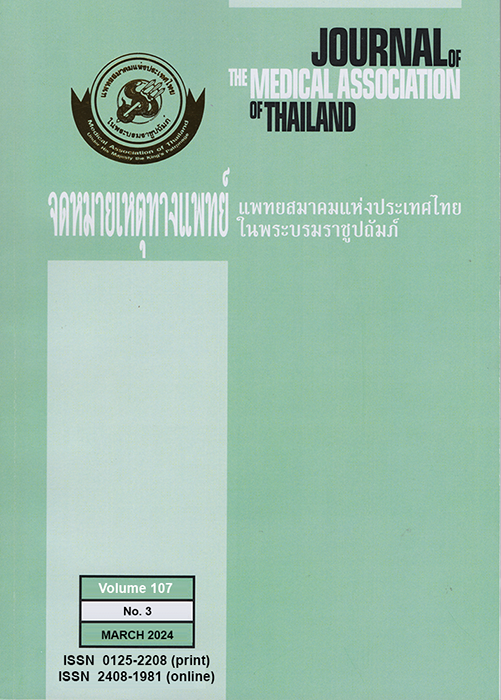
Effectiveness and Adverse Events of Generic and Original Imipenem/Cilastatin in Hospitalized Patients: The First Multicenter Non-Inferiority Study in Thailand (2023)
Title : Effectiveness and Adverse Events of Generic and Original Imipenem/Cilastatin in Hospitalized Patients: The First Multicenter Non-Inferiority Study in Thailand
Researcher : Suankratay, C., Mootsikapun, P., Jirajariyavej, S., …Plongla, R.,Leelarasamee, A.
Department : Faculty of Medicine, Siam University, Bangkok, Thailand
Abstract : Objective: Imipenem/cilastatin, a broad-spectrum antibacterial, is reserved for treatment of serious infections caused by multidrug-resistant Gram-negative bacteria. The present study was aimed to compare the effectiveness and adverse events of generic and original imipenem/cilastatin.
Materials and Methods:A retrospective, multicenter, cohort, non-inferiority study of generic imipenem/cilastatin (Sianem®), and original imipenem/cilastatin (Tienam®) was carried on between November 2017 and September 2020. The centers included Srinagarind Hospital, Taksin Hospital, Nakornping Hospital, Nakhonpathom Hospital, and King Chulalongkorn Memorial Hospital. The clinically relevant data were retrieved from the medical records on day 3, 7, and 14 after enrollment. A sample size of 260 patients per arm was needed.
Results: There were 214 and 227 medical and surgical patients enrolled in generic and original imipenem/cilastatin groups, respectively. Baseline characteristics of the two groups were not significantly different. Most patients were male and elderly. Comorbidity was observed in 86.6%. The average length of hospital stay was 17 days. At day 14 after enrollment, the favorable outcome in generic and original imipenem/cilastatin groups were 83.1% and 90.0%, respectively, with no statistical difference. The mortality rates were 3.4% and 2.0% in generic and original imipenem/ cilastatin groups, respectively, with no statistic difference. Serious adverse events were also not significantly different between the two groups at 0.9% and 0.4%.
Conclusion: The generic imipenem/cilastatin was non-inferior to the original imipenem/cilastatin in terms of effectiveness and adverse events for the treatment of serious bacterial infections in hospitalized adult patients.
Keywords: Effectiveness; Safety; Adverse events; Generic drug; Imipenem/cilastatin
Link to article: Journal of the Medical Association of Thailand, 2023, 106(8), pp. 785–790. DOI: 10.35755/jmedassocthai.2023.08.13876
Journal : Journal of the Medical Association of Thailand / in Scopus
Bibliography : Suankratay C,Mootsikapun P, Jirajariyavej S,Kawila R, Nimitvilai S, Plongla R, & Leelarasamee A. (2023). Effectiveness and adverse events of generic and original imipenem/cilastatin in Hospitalized Patients: The first multicenter non-inferiority study in Thailand. Journal of the Medical Association of Thailand, 1106(8), 785–790.
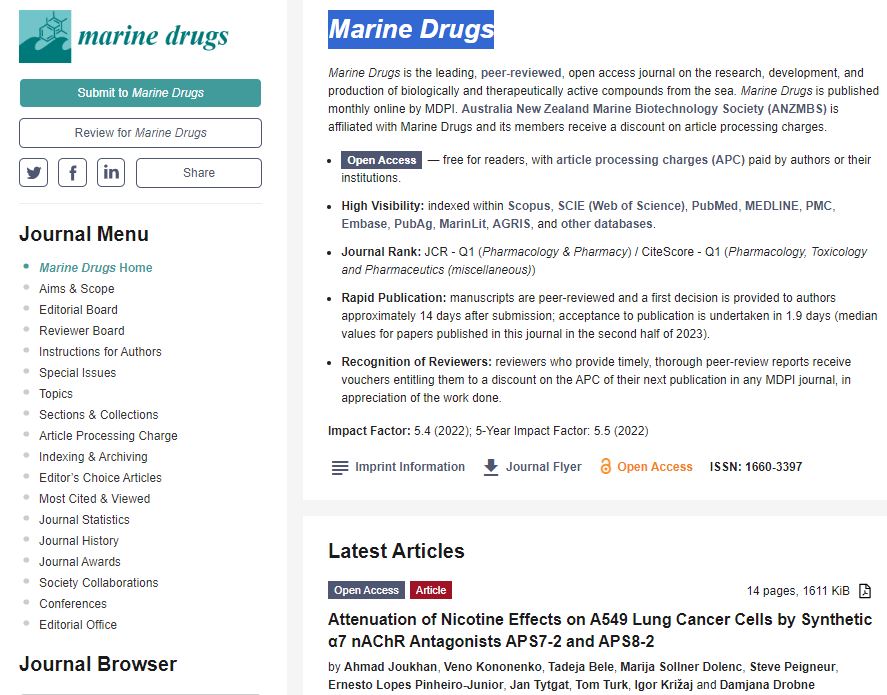
Effects of astaxanthin from shrimp shell on oxidative stress and behavior in animal model of Alzheimer’s disease (2019)
Title : Effects of astaxanthin from shrimp shell on oxidative stress and behavior in animal model of Alzheimer’s disease
Researcher : Taksima, T., Chonpathompikunlert, P., Sroyraya, M., Hutamekalin, P., Limpawattana, M., & Klaypradit, W.
Department : สำนักอธิการบดี มหาวิทยาลัยสยาม
E-mail : maruj.lim@siam.edu
ฐานข้อมูลงานวิจัย มหาวิทยาลัยสยาม : –
Link to article: Marine Drugs, 2019, 17(11), 628. https://doi.org/10.3390/md17110628
Journal : Marine Drugs / in Scopus
Bibliography : Taksima, T., Chonpathompikunlert, P., Sroyraya, M., Hutamekalin, P., Limpawattana, M., & Klaypradit, W. (2019). Effects of Astaxanthin from Shrimp Shell on Oxidative Stress and Behavior in Animal Model of Alzheimer’s Disease. Marine Drugs, 17(11), 628. https://doi.org/10.3390/md17110628

Effects of coconut (Cocos nucifera L.) protein hydrolysates obtained from enzymatic hydrolysis on the stability and rheological properties of oil-in-water emulsions (2016)
Title : Effects of coconut (Cocos nucifera L.) protein hydrolysates obtained from enzymatic hydrolysis on the stability and rheological properties of oil-in-water emulsions
Researcher : Thaiphanit, S., Schleining, G., Anprung, P.,
Department : ภาควิชาเทคโนโลยีการอาหาร คณะวิทยาศาสตร์ มหาวิทยาลัยสยาม
E-mail : somruedee.tha@siam.edu
ฐานข้อมูลงานวิจัย มหาวิทยาลัยสยาม: –
Link to article: Food Hydrocolloids, 2016, 60, pp. 252–264. https://doi.org/10.1016/j.foodhyd.2016.03.035
Journal : Food Hydrocolloids / in Scopus
Bibliography : Thaiphanit, S., Schleining, G., & Anprung, P. (2016). Effects of coconut (Cocos nucifera L.) protein hydrolysates obtained from enzymatic hydrolysis on the stability and rheological properties of oil-in-water emulsions. Food Hydrocolloids, 60, 252–264. https://doi.org/10.1016/j.foodhyd.2016.03.035
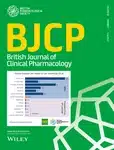
Effects of pharmacist interventions on cardiovascular risk factors and outcomes: An umbrella review of meta-analysis of randomized controlled trials (2022)
Title : Effects of pharmacist interventions on cardiovascular risk factors and outcomes: An umbrella review of meta-analysis of randomized controlled trials
Researcher : Rattanavipanon, W., Chaiyasothi, T., Puchsaka, P., …Veettil, S.K., Chaiyakunapruk, N.
Abstract : Aims
To grade the evidence from published meta-analyses of randomized controlled trials (RCTs) that assessed effects of pharmacist intervention on cardiovascular risk factors and cardiovascular outcomes.
Methods
MEDLINE, Embase, and the Cochrane Library were searched from database inception to July 2021. Meta-analyses of RCTs were eligible. Quality of evidence were assessed by GRADE approach.
Results
From 9308 publications, 149 full-text articles were evaluated for eligibility, and 24 studies with 85 unique meta-analyses that assessed effects of pharmacist intervention on cardiovascular risk factors and cardiovascular outcomes were selected. Overall, 71.7% (61/85) of unique meta-analyses showed significant impacts of pharmacist intervention. For the quality of evidence, 63.4% of meta-analyses had large heterogeneity (I2 > 50%) while 1.2, 16.5, 32.9 and 49.4% of meta-analyses were graded as high, moderate, low and very low quality based on GRADE approach, respectively. Among meta-analyses with moderate quality, pharmacist interventions significantly mitigated risk factors (including 6/3 mmHg reduction of blood pressure, increased the rate of lipid control, glucose control and smoking cessation (pooled odds ratio, [95% confidence interval] 1.91 [1.55, 2.35], 3.11 [2.3, 4.3] and 2.3 [1.33, 3.97], respectively) and improved medication adherence (1.67 [1.38, 2.02]). Furthermore, pharmacist interventions significantly reduced all-cause mortality (0.72 [0.58, 0.89]) and improved quality of life in patients suffering from chronic heart failure.
Conclusion
This umbrella review found convincing evidence that pharmacist intervention can provide a wide range of benefits in cardiovascular disease management, ranging from risk factor control, improvement in medication adherence and, in some settings, reduction in morbidity and mortality.
Link to article: https://doi.org/10.1111/bcp.15279
Journal : British Journal of Clinical Pharmacology, 2022
Bibliography : Rattanavipanon, W., Chaiyasothi, T., Puchsaka, P., Mungkornkaew, R., Nathisuwan, S., Veettil, S. K. & Chaiyakunapruk, N.(2022). Effects of pharmacist interventions on cardiovascular risk factors and outcomes: An umbrella review of meta-analysis of randomized controlled trials. British Journal of Clinical Pharmacology, 88(7), 064–3077. https://doi.org/10.1111/bcp.15279